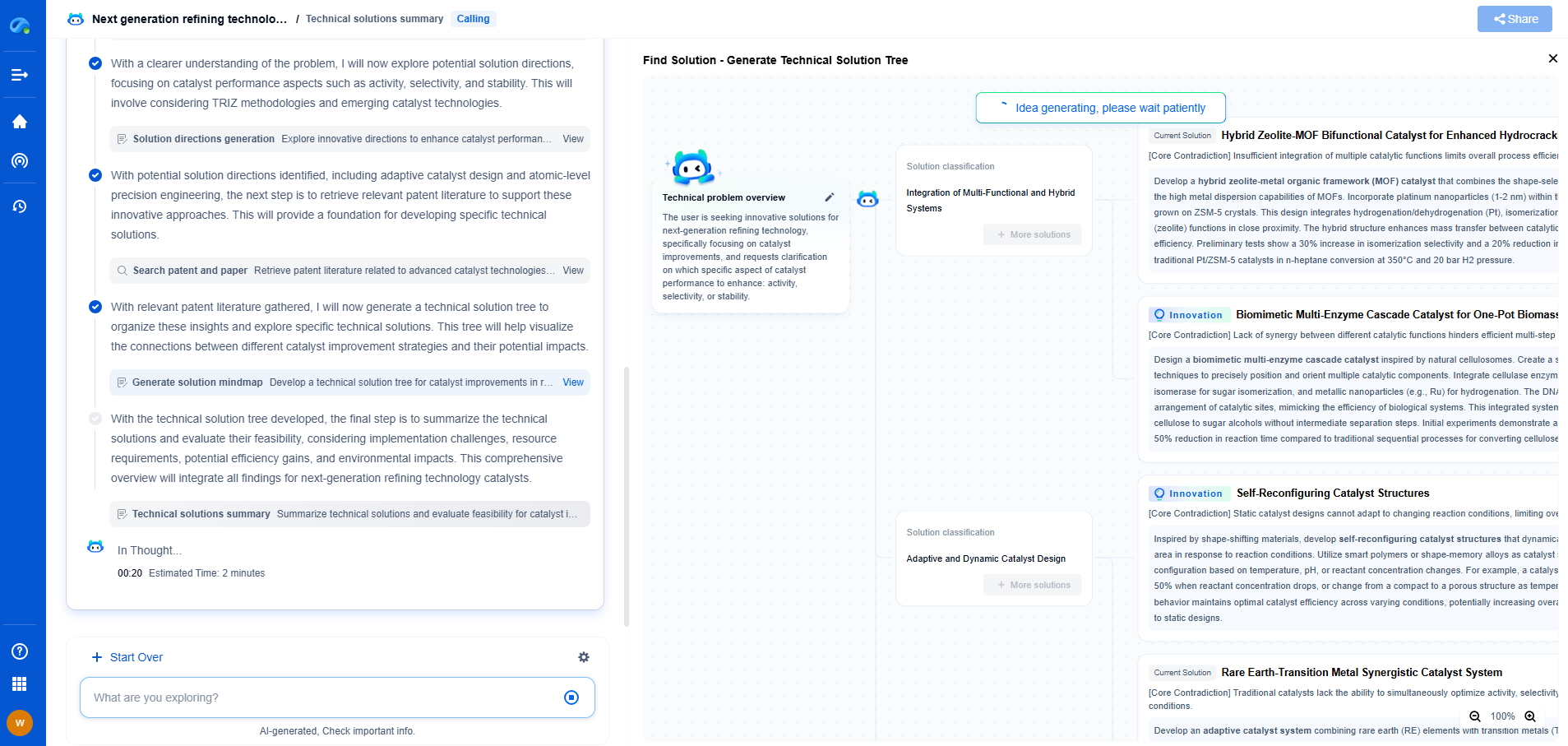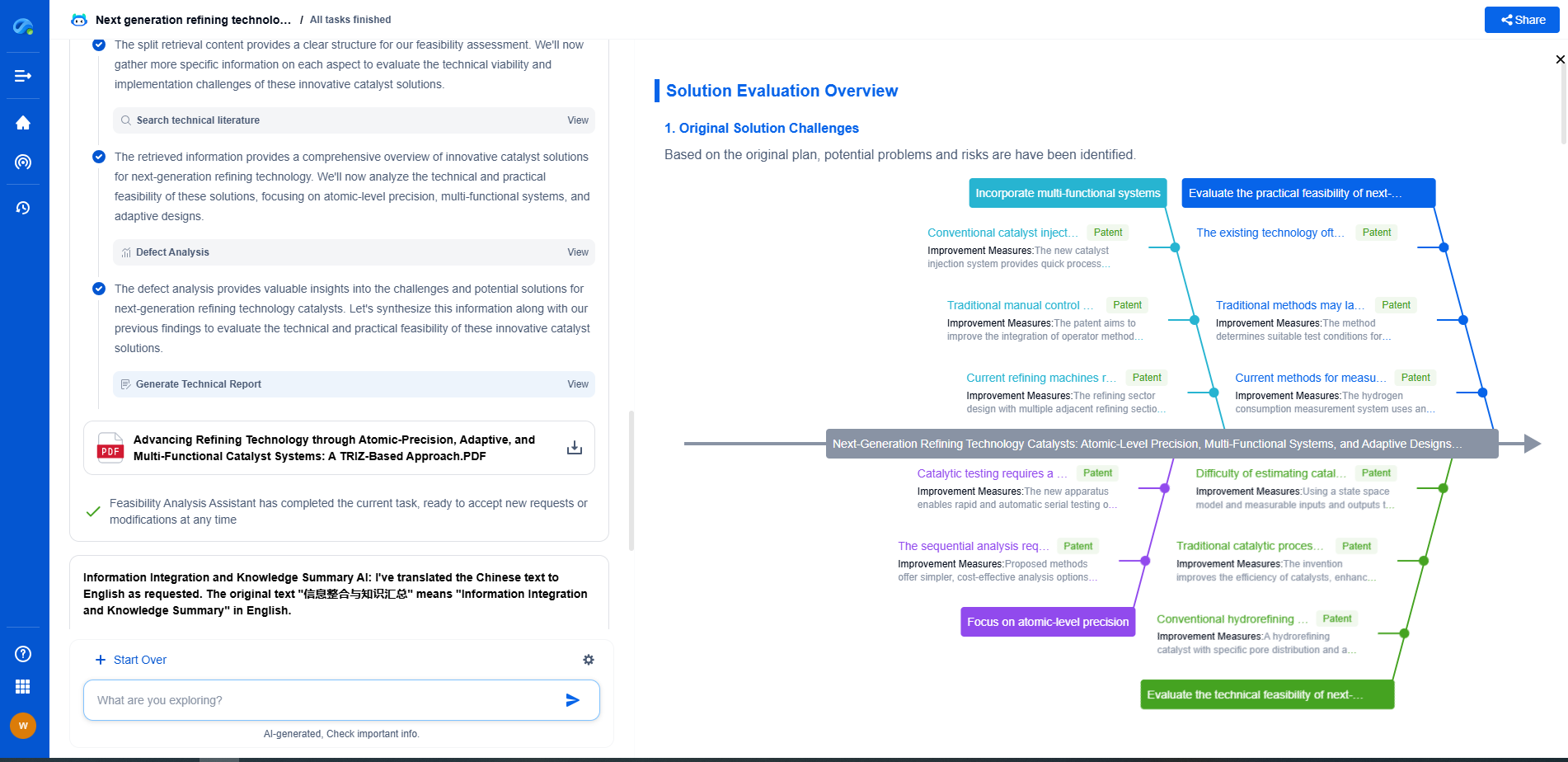How Edge Computing Downhole Filters Noise Before Surface Transmission
JUN 20, 2025 |
In the oil and gas industry, the extraction process involves a multitude of complex operations that generate massive amounts of data. Traditionally, this data is transmitted from downhole sensors to the surface for analysis, often resulting in delays and inefficiencies. Edge computing offers a transformative approach by processing data at or near the source, thereby reducing latency and improving decision-making processes. One critical application of edge computing in this sector is its ability to filter noise from downhole data before it is transmitted to the surface. This capability not only enhances data quality but also optimizes communication bandwidth and improves operational efficiency.
Understanding Downhole Noise
Downhole environments are characterized by extreme conditions, including high pressure, temperature, and a plethora of mechanical vibrations. These factors contribute to the generation of noise in the data collected by downhole sensors. Noise, in this context, refers to any irrelevant or extraneous data that can obscure the meaningful information required for decision-making. Filtering this noise is critical to ensure that only valuable and accurate data is transmitted to the surface, allowing for better analysis and operational decisions.
The Role of Edge Computing in Noise Filtration
Edge computing brings computational capabilities closer to the data source, enabling real-time data processing and analysis. In the context of downhole operations, edge devices are deployed near sensors to perform noise filtration before the data is transmitted to the surface. These devices utilize advanced algorithms to distinguish between noise and valuable data, ensuring that only high-quality information is sent for further analysis.
One of the primary advantages of using edge computing for noise filtration is its ability to perform computations locally, thereby reducing the need for data to be transmitted over long distances. This localized processing not only minimizes latency but also decreases the risk of data loss or degradation during transmission. Furthermore, by filtering noise at the source, edge computing helps conserve bandwidth, allowing for more efficient use of communication resources.
Techniques for Noise Filtration
Several techniques are employed by edge computing devices to filter noise from downhole data. One common approach is the use of signal processing algorithms, which analyze the frequency and amplitude of data signals to distinguish between noise and meaningful data. These algorithms are capable of identifying patterns and anomalies, allowing for precise noise filtration.
Another technique involves machine learning models that have been trained to recognize specific noise characteristics in downhole environments. These models can adapt to changing conditions and improve their accuracy over time, ensuring that noise is effectively filtered across different operational scenarios.
Additionally, edge devices may employ data compression techniques to further enhance the efficiency of data transmission. By compressing data after noise filtration, these devices can reduce the overall data volume, making it easier and faster to transmit to the surface.
Benefits of Noise Filtration Before Surface Transmission
Filtering noise from downhole data before it reaches the surface presents several key benefits for the oil and gas industry. Firstly, it enhances data quality by ensuring that only relevant and accurate information is available for analysis. This leads to more informed decision-making and improved operational outcomes.
Secondly, noise filtration reduces the volume of data that needs to be transmitted, optimizing the use of available bandwidth. This is particularly important in remote locations where communication resources may be limited or expensive. By transmitting only the essential data, companies can achieve cost savings and improve the reliability of their communication systems.
Finally, by reducing latency and enabling real-time data analysis, edge computing enhances the responsiveness of downhole operations. This can lead to quicker identification of issues, more efficient resource management, and ultimately, increased productivity and safety.
Conclusion
Edge computing represents a significant advancement in the oil and gas industry, particularly in its ability to filter noise from downhole data before surface transmission. By processing data at the source, edge devices improve data quality, optimize bandwidth usage, and enhance the overall efficiency of downhole operations. As the industry continues to embrace digital transformation, the role of edge computing in noise filtration and other applications will become increasingly important, driving innovation and improving operational performance.
Navigating the Complexities of Drilling Innovation? Let AI Do the Heavy Lifting
In an industry where subsurface conditions, materials science, and drilling dynamics evolve rapidly, staying ahead of technical innovation and protecting your intellectual property can be overwhelming.
Patsnap Eureka, our cutting-edge AI assistant, is built for R&D and IP professionals in high-tech industries like drilling technologies. Whether you're optimizing rotary steerable systems, evaluating high-temperature materials, or exploring next-gen automation in directional drilling, Eureka enables real-time analysis of the latest patents, technology landscapes, and competitive movements—all from one intelligent, intuitive platform.
Ready to accelerate your development cycle and make strategic decisions with confidence? Explore Patsnap Eureka today—where smart drilling starts with smarter insights.
- R&D
- Intellectual Property
- Life Sciences
- Materials
- Tech Scout
- Unparalleled Data Quality
- Higher Quality Content
- 60% Fewer Hallucinations
Browse by: Latest US Patents, China's latest patents, Technical Efficacy Thesaurus, Application Domain, Technology Topic, Popular Technical Reports.
© 2025 PatSnap. All rights reserved.Legal|Privacy policy|Modern Slavery Act Transparency Statement|Sitemap|About US| Contact US: help@patsnap.com

